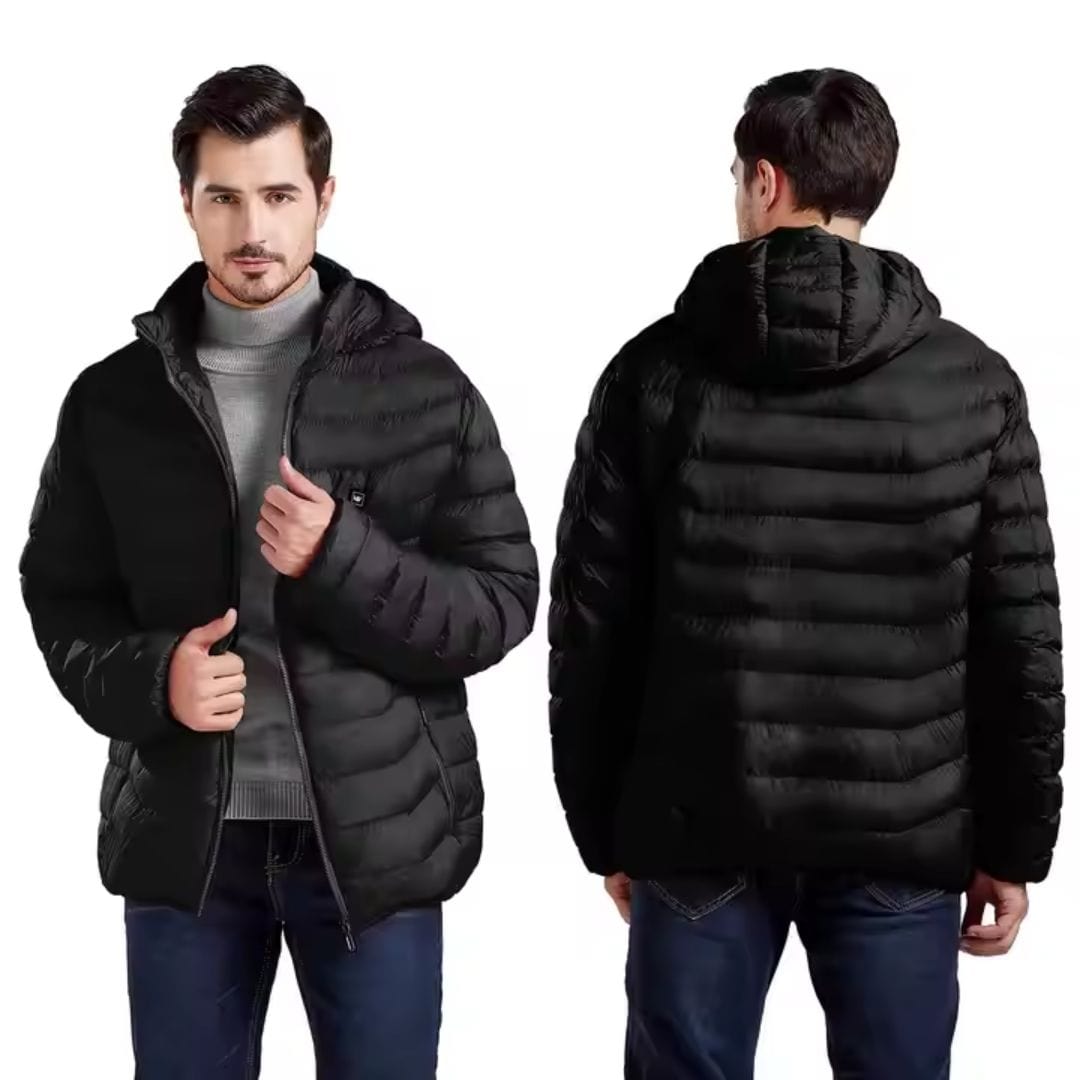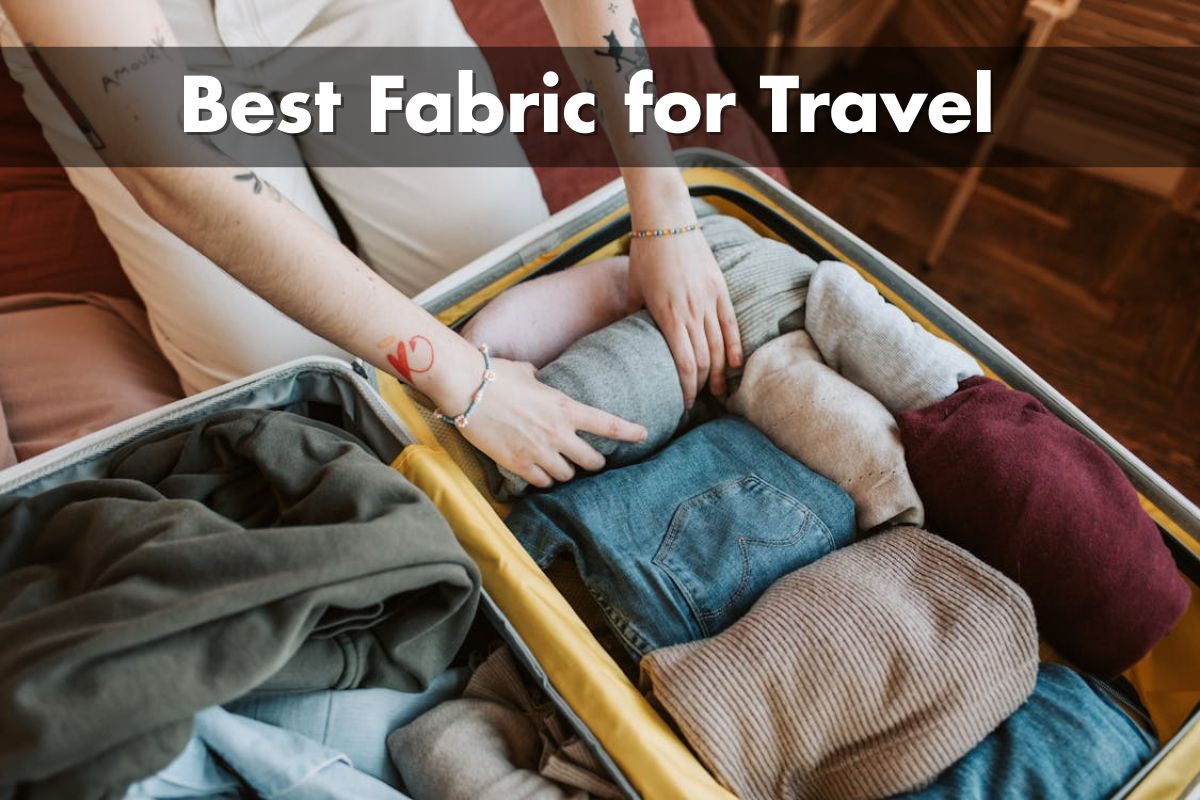Travel fabrics have come a long way, evolving to meet the needs of modern adventurers. From lightweight, wrinkle-resistant synthetics to eco-friendly options, there's a fabric for every climate and activity. Materials like polyester, nylon, and merino wool offer breathability, durability, and versatility, making them ideal for long journeys and unpredictable weather.
When it comes to travel, your clothing should work as hard as you do. By choosing fabrics designed for performance, you'll stay comfortable, look polished, and feel prepared no matter where your adventures take you.
Factors to Consider When Choosing Travel Fabrics
Selecting the right travel fabrics is essential for ensuring functionality, comfort, and adaptability. Several key factors can influence your choice, helping you build a wardrobe that performs well under diverse conditions.
1. Climate and Destination Weather
Choose fabrics based on the specific climate of your destination. For hot and humid regions, aim for breathable, lightweight materials like cotton, Tencel, or moisture-wicking synthetic blends. In colder climates, opt for insulating and moisture-wicking fabrics such as merino wool or fleece to maintain warmth and prevent dampness.
2. Activity Level and Versatility
Match fabric properties to planned activities. Durable and quick-drying fabrics like nylon or polyester are ideal for outdoor adventures. For urban exploration, prioritize comfort and style with wrinkle-resistant materials that maintain a polished appearance.
3. Weight and Packability
Lightweight fabrics reduce luggage bulk and enhance travel convenience. Look for compressible options like polyester or merino wool, which pack efficiently without occupying excess space.
4. Wrinkle Resistance
Minimize the need for ironing by choosing materials resistant to wrinkles, like nylon, spandex, or travel blends. These fabrics maintain their shape and appearance even after being packed for extended periods.
5. Ease of Maintenance
Opt for easy-care fabrics that resist stains and dry quickly. Synthetic options like polyester and nylon excel in this area, enabling you to clean and reuse garments effortlessly during multi-day trips.
6. Sustainability
For eco-conscious choices, select environmentally friendly fabrics like organic cotton, Tencel, or recycled polyester. These materials offer functionality while reducing your environmental impact.
7. UV Protection and Moisture Management
In sun-prone destinations, prioritize fabrics with built-in UV protection. Quick-drying, moisture-wicking materials prevent discomfort from sweat, ensuring you stay dry and cool. Performance fabrics like polyester and merino wool provide these benefits effectively.
Best Fabrics for Travel Clothes
Choosing the best fabric for travel clothes ensures you stay comfortable, pack light, and remain adaptable during your journey. Below, explore a range of fabrics and their unique benefits for different travel needs.
Merino Wool
Merino wool offers exceptional versatility for travelers. This lightweight fabric regulates temperature, keeping you warm in cold climates and cool in hot weather. Its moisture-wicking and quick-drying properties make it ideal for active trips. Merino is also odor-resistant, allowing multiple wears between washes, and its natural elasticity resists wrinkles, saving you packing space.
Polyester
Polyester stands out for its durability, affordability, and resistance to shrinking or stretching. This quick-drying synthetic fabric absorbs only 0.4% of its weight in moisture, ensuring you stay comfortable throughout the day. Blended polyester options are popular for wrinkle resistance and improved texture. It's often found in activewear and rainproof garments due to its hydrophobic nature.
Nylon
Nylon is known for its strength, flexibility, and quick-drying abilities. Commonly used in outerwear and travel gear, nylon withstands frequent use while maintaining elasticity. Its wrinkle resistance and lightweight quality make it a reliable choice for long trips. Nylon is also less prone to damage, making it ideal for rugged conditions.
Cotton
Cotton provides softness and breathability, making it comfortable for warm climates. However, it's less moisture-wicking and slower to dry compared to synthetics. For lightweight and easy-packing options, choose cotton blends that improve versatility. While it wrinkles more, washing and drying cotton garments remain simple.
Rayon
Rayon offers a smooth, lightweight texture suitable for hot, humid destinations. This semi-synthetic fabric mimics the feel of silk without high costs. While it drapes well and resists wrinkles to an extent, rayon requires gentle washing as it's less durable than other fabrics.
Linen
Linen excels in breathability and comfort in warm climates. It's lightweight and absorbs moisture, keeping you cool in humid conditions. While linen wrinkles more than synthetics, its casual, relaxed appearance makes it perfect for beach trips and tropical getaways.
Silk
Silk provides luxurious comfort with a smooth and lightweight feel. Packing compactly, silk adds elegance to travel wardrobes. It dries quickly and regulates temperature, keeping you comfortable in both warm and cool environments. However, it's less durable and requires careful cleaning.
Bamboo
Bamboo fabrics combine softness, breathability, and eco-friendliness. Naturally antimicrobial and odor-resistant, bamboo suits long journeys. It wicks moisture efficiently, making it a great option for humid destinations and layering in colder climates.
Natural/Synthetic Blends
Blends of natural and synthetic fibers capitalize on the strengths of both. For example, cotton-polyester blends balance softness and durability, while wool-nylon mixes combine temperature regulation and stretch. These versatile options suit diverse weather conditions and reduce wrinkles.
Eco-Friendly Fabrics
Eco-friendly fabrics like Tencel and organic cotton offer sustainable travel clothing choices. Tencel, derived from plant fibers, provides softness, breathability, and moisture-wicking. Organic cotton eliminates harmful chemicals during production. These options cater to eco-conscious travelers seeking comfort and sustainability.
Fabric Recommendations for Specific Travel Needs
Choosing the right fabric ensures comfort and practicality while adapting to diverse travel scenarios. Different climates and activities require materials designed for specific purposes.
Fabrics for Warm Climates
For hot and humid destinations, breathable, lightweight fabrics reduce discomfort and improve air circulation.
- Linen: Ensures excellent breathability and dries rapidly, ideal for scorching temperatures.
- Cotton: Soft and airy with good moisture-absorption but may be slower to dry.
- Madras: A lightweight cotton option with vibrant patterns, perfect for sunny environments.
- Seersucker: Promotes airflow through its puckered texture, keeping you cool.
- Rayon: Offers softness and absorbency with better wrinkle resistance than cotton.
Fabrics for Cold Climates
Cold-weather travel demands insulation, moisture-wicking, and breathability to retain warmth without overheating.
- Merino Wool: Naturally moisture-wicking, regulates temperature, and resists odor.
- Cashmere: Three times warmer than wool, offering softness and excellent insulation.
- Down: Provides superior warmth while being lightweight; ensure dryness for higher performance.
- Fleece: Lighter than wool, retaining warmth even when wet and drying faster.
- Synthetic Insulation: Materials like PrimaLoft mimic down’s warmth without water sensitivity.
Wrinkle-Resistant Fabrics
Wrinkle-free options simplify travel by reducing ironing needs and staying crisp after packing.
- Polyester: Lightweight and highly resistant to wrinkles, making it ideal for travel.
- Nylon: Durable, elastic, and wrinkle-resistant, adapting well to various activities.
- Blends: Natural-synthetic fabric combinations, like cotton-polyester, enhance wrinkle resistance while maintaining comfort.
Quick-Dry Fabrics
Quick-dry fabrics are crucial for unexpected weather or frequent washing during extended trips.
- Polyester: Dries quickly, maintaining durability and shape.
- Nylon: Absorbs minimal moisture and dries faster than natural fibers.
- Rayon: Absorbs sweat while being lightweight with decent drying ability.
- Bamboo: Offers moisture-wicking and rapid drying, with eco-friendly properties.
Odor-Resistant Fabrics
Odor-resistant fabrics prevent unpleasant smells on long trips or after physical activities.
- Merino Wool: Naturally combats odor-causing bacteria, remaining fresh for multiple wears.
- Bamboo: Contains antibacterial properties, reducing odor and bacteria growth.
- Synthetic Fabrics with Treatments: Options like treated polyester resist bacteria and odors effectively.
- Fabrics for Travel in Cold Weather
Selecting insulating and breathable fabrics is crucial for maintaining warmth and comfort during travel in cold climates. The right materials can help regulate body temperature and wick away moisture, ensuring prolonged usability and coziness.
Tips for Selecting and Caring for Travel Fabrics
Select Fabrics for Versatility
Choose fabrics that perform well across various climates and activities. For example, opt for merino wool for temperature regulation and odor resistance, polyester for durability and quick-dry properties, or nylon for strength in rugged conditions. Pack versatile pieces in synthetic blends or eco-friendly materials like Tencel to minimize luggage space while maximizing outfit options.
Prioritize Wrinkle Resistance
Pick wrinkle-resistant fabrics to maintain a polished look during travel. Options like polyester and nylon resist creases, ensuring your clothes stay neat. These fabrics are ideal for items like shirts and travel pants that need to maintain their shape after being packed.
Focus on Ease of Maintenance
Select materials that are easy to clean without special care. Fabrics like synthetic blends, merino wool, and bamboo wash easily and dry quickly, making them travel-friendly. Avoid high-maintenance fabrics like linen or silk if your trip involves limited laundry access.
Invest in Protective Features
Look for fabrics with moisture-wicking, UV protection, or weather-resistant qualities. Chitosante Interlock, for instance, offers UV protection along with breathability. These features enhance comfort and protect against environmental factors.
Care for Your Fabrics Appropriately
Maintain the quality of your travel clothes by following care instructions. Use cold water washes for delicate fabrics like bamboo, avoid high-heat dryers for synthetics, and air dry merino wool to prevent shrinking. Proper care extends the lifespan of your garments, reducing the need for replacements.
Pack Strategically
Fold lightweight fabrics compactly to save space. For example, compressible options like rayon and Tencel maximize luggage capacity. Roll wrinkle-resistant items like nylon to reduce creasing during travel. Organize your bag with packing cubes for easier access and optimized storage.
Avoid Overpacking
Choose multipurpose fabrics to reduce the number of items you bring. Shirts made from polyester-spandex blends work for both active pursuits and casual wear. Similarly, layering staples like merino wool tops adapt to varying temperatures, cutting down on packing needs.
Common Questions About Fabrics for Travel Clothing
What Fabrics Are Best for Hot Climates?
Lightweight, breathable fabrics like linen, cotton, rayon, and bamboo excel in hot weather. These materials promote air circulation and wick moisture, keeping you cool. Opt for light colors to reflect heat and reduce discomfort during sunny days.
Which Fabrics Are Suitable for Cold Climates?
Insulating fabrics like merino wool, fleece, down, and cashmere provide warmth. Synthetic insulation materials also retain heat efficiently. Choose options that balance heat retention with breathability, ensuring comfort in fluctuating temperatures.
How Do Synthetic Fabrics Compare to Natural Ones?
Synthetic fabrics like polyester and nylon are durable, lightweight, and quick-drying. They resist wrinkles and maintain their shape after packing. Natural fabrics like merino wool and cotton offer softness and breathability but may require more care.
Are Wrinkle-Resistant Fabrics Necessary?
Wrinkle-resistant fabrics enhance convenience, particularly for long trips or business travel. Polyester, nylon, and treated natural fabrics like wrinkle-free cotton or merino wool maintain a polished appearance without ironing.
What Fabrics Handle Moisture Effectively?
Moisture-wicking fabrics like polyester, nylon blends, and merino wool effectively manage sweat, ensuring dryness in humid conditions. These materials excel for outdoor activities or warm-weather travel.
Can Travel Fabrics Be Eco-Friendly?
Eco-friendly options like Tencel, bamboo textiles, and organic cotton combine sustainability with performance. These materials support environmentally conscious travel while ensuring comfort and functionality.
Which Fabrics Are Versatile for Multiple Destinations?
Blends of natural and synthetic materials offer versatility for varying climates and activities. Fabrics like nylon-spandex blends or merino wool accommodate both hot and cold weather, making them travel-friendly.
Do Luxury Fabrics Work Well for Travel?
Silk and cashmere add a touch of luxury while being lightweight and compact. Although these fabrics require careful handling, they deliver style and comfort, making them ideal for formal or special occasions.
Conclusion
Choosing the right fabric for your travel clothes can make all the difference in how comfortable and prepared you feel on your journey. Whether you're exploring tropical climates or braving chilly destinations, selecting fabrics that align with your needs ensures you stay comfortable, stylish, and ready for any adventure.
By prioritizing breathability, durability, and ease of care, you can build a travel wardrobe that works as hard as you do. Don’t forget to consider eco-friendly options to make your travels more sustainable. With the right fabrics in your suitcase, every trip becomes a little easier and a lot more enjoyable.
















